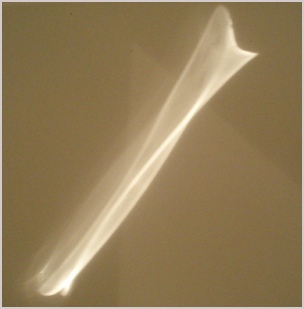Another Timbre TimHarrisonbre

Lali Barrière / Eduard Màrquez - Architectural Model Making
I liked the Architectural Model Making score from the very beginning and was pleased to take part in the project, though soon realised how challenging the task would be. My only previous experience with graphic scores was my participation in Radi d'or, by Ferran Fages, in 2011, and the realisation of John Cage's Cartridge Music in 2012. This was quite different.
First of all...to study the score, to think about what it establishes, and what is freely left to the musician. To figure out what I want to do, and try to imagine how I have to make it sound. I think about it as I used to when I studied mathematics: letting the problem occupy my mind, and the ideas build by themselves.
Two general ideas emerge: (1) I want to play with my objects in some way, and (2) I want to collaborate with Eduard Márquez.
I see the piece as a set of four distinct voices, which I want to record separately, avoiding or minimising editing. I wonder if the idea of working with one different material for each voice would be too naive, too obvious.
Eduard's percussion together with sinewaves forms the basis from which I build the other two voices. During this process some issues come up. The main question arising from the choice of "instruments" is how to combine the continuous, dense, and rhythmic drum sounds with the amplified objects, which are totally the opposite. And all this while respecting the score and keeping to my customary way of playing: the instability, the use of fragile sound materials, the randomness and the accidents.
I need a lot of trial runs to accomplish my goal and get the materials to fit together. The task at this point is finding sounds appropriate for the two shorter parts. And in the end my initial intuition proves correct: the feedback, which I had abandoned after a few trials, turns out to be a good choice for the first voice. It is a work of tenacity, of experiments and trials, going back and forth.
In the final stage I have to solve another interesting problem: how to handle the volume with such diverse dynamics? How to manage the silences? The difficulty arises when trying to compare the volumes of dense sounds with those with a sparse spectrum or even pure sinewaves, or sounds that are more or less smooth and continuous with single strikes. In this case the solution is more technical. I listen to the recordings again and again and try different ways of combining sounds, equalising and adjusting the relative volume of the tracks.
The last difficulty comes when the piece is finished. Some doubts have crept into my mind... what other decisions could I have taken instead of those that lead me to the result I have in hand? This makes me curious about what the other musicians have produced and I look forward to listening to their realisations.
Lali Barrière, Barcelona, February 2014
Return to Sarah Hughes graphic score project page